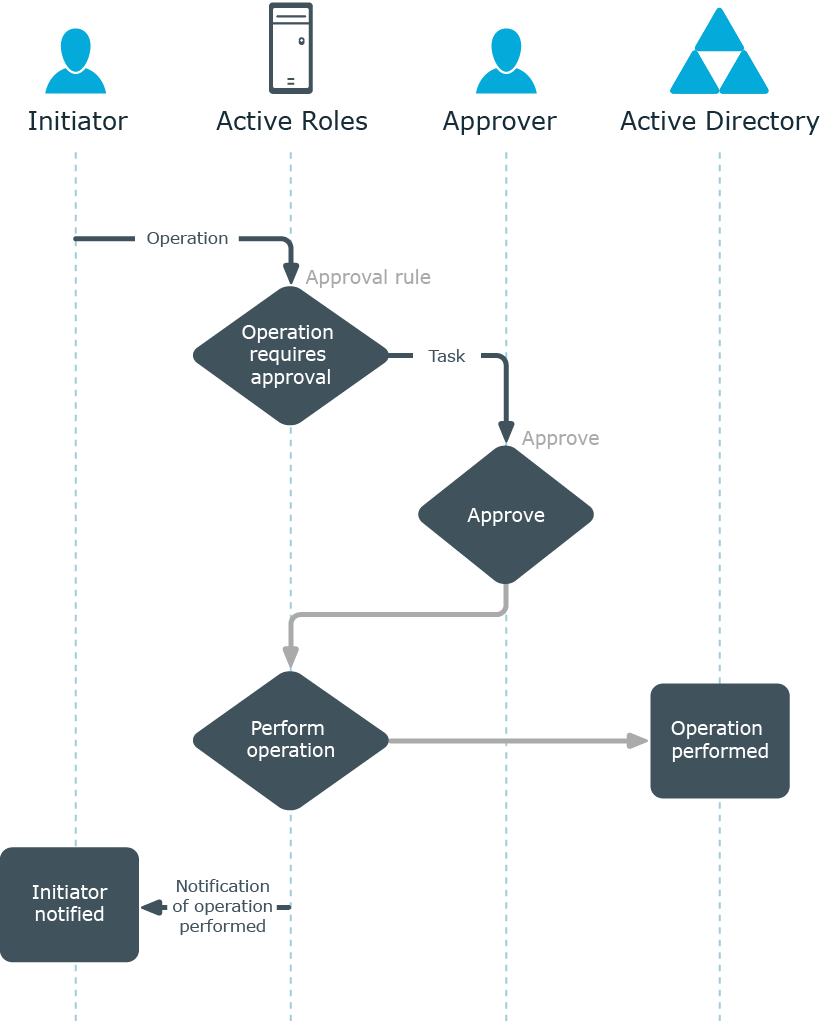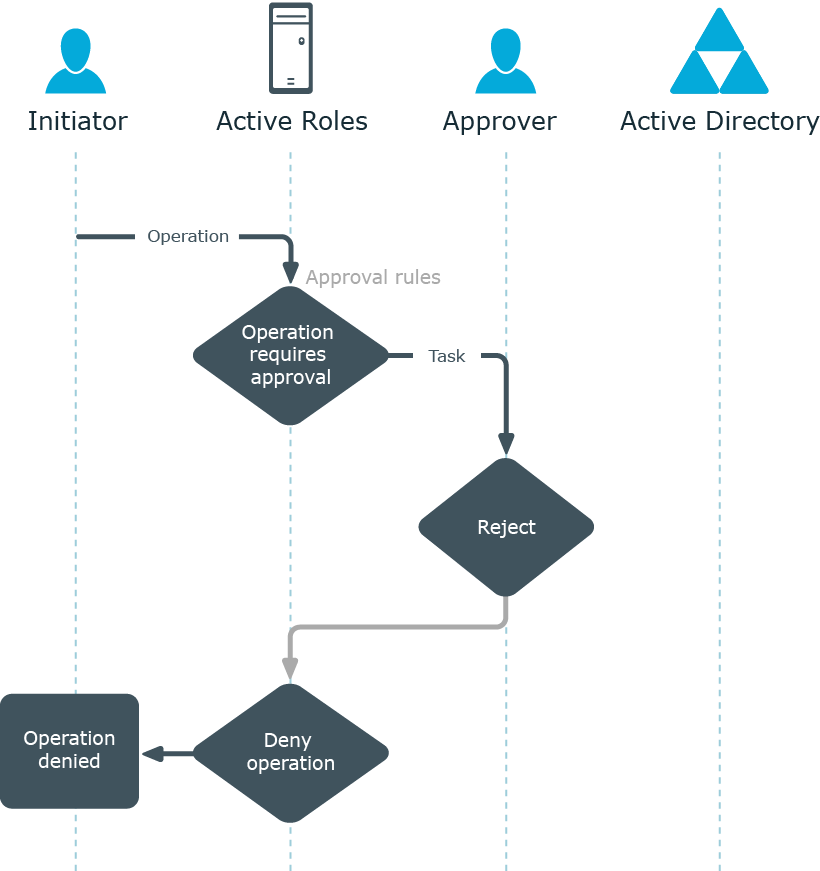The object to be changed or created by the operation. For example, if creation of a user account is requested, that account is referred to as the operation target object. With a request to add a user to a group, the group is referred to as the operation target object.
Operation target object
How it works
Approval workflow is governed by workflow start conditions and approval rules. Workflow start conditions determine which kind of operation causes the workflow to start, and the approval rules added to the workflow determine the persons who are authorized to approve the operation (approvers).
When an Active Roles user requests an operation, Active Roles checks to see whether the operation meets the start conditions of any workflow, and starts the workflow whose conditions are met. An approval rule included in the workflow then generates an approval task and assigns the task to the approvers defined by the rule.
An approver completes an approval task by applying the Approve or Reject action to the task. This changes the status of the task from “Pending” to “Approved”, or “Rejected” respectively.
Action: Approve
If the approver applies the Approve action to the task, Active Roles allows the operation to be performed.
Figure 103: Approve action


